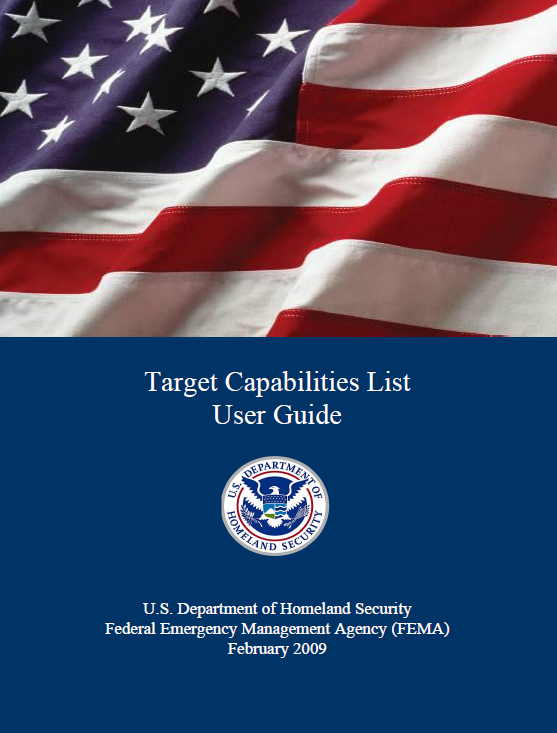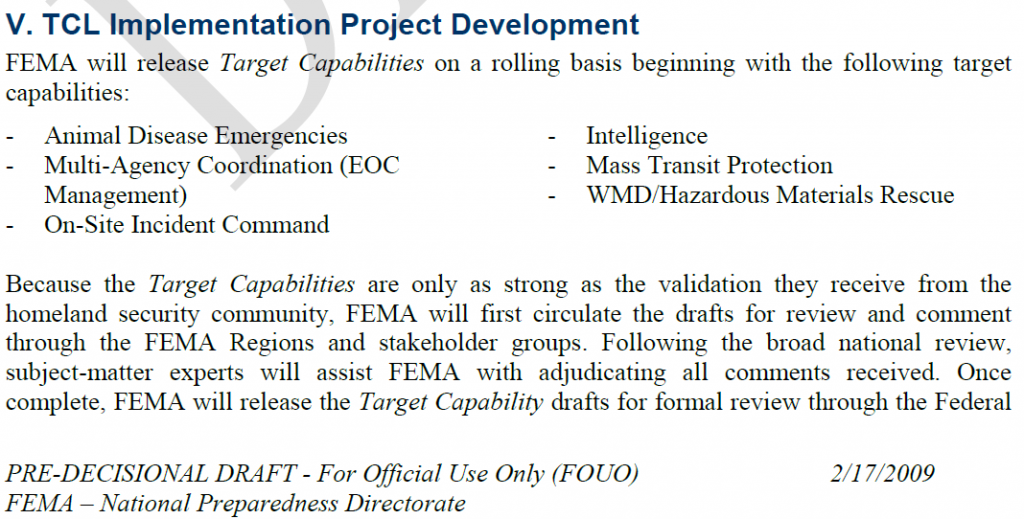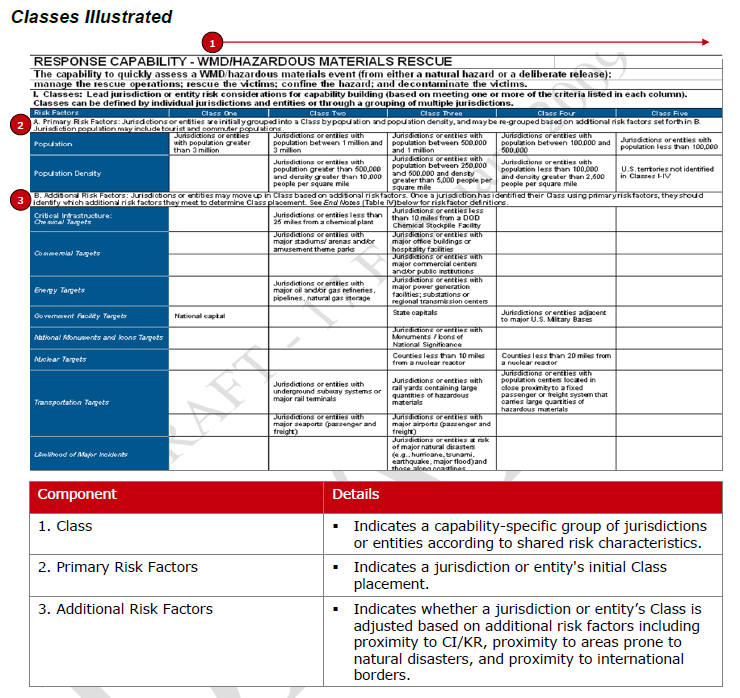 National Preparedness Directorate
National Preparedness Directorate
- 18 pages
- PRE-DECISIONAL DRAFT
- For Official Use Only
- February 17, 2009
I. Purpose
The Target Capabilities List (TCL) Implementation Project is the method by which the Federal Emergency Management Agency (FEMA) will update the TCL and implement the doctrine of capabilities-based preparedness as outlined in the National Preparedness Guidelines. The goal of the project is to provide more user-friendly, accessible, and credible capability targets with which to link all preparedness cycle activities to strengthen preparedness across prevention, protection, response, and hazard mitigation capabilities. The purpose of this document is twofold. First, it explains the history of the TCL and why FEMA is leading the effort to streamline and revise the content found in TCL Version 2.0 through the establishment of updated Target Capabilities. Secondly, the document provides an executive summary of the updated Target Capabilities, how they can be applied to identify capability targets and gaps, and explains how jurisdictions may leverage the Target Capabilities to build capabilities along each phase of the Preparedness Cycle.
II. Background
Homeland Security Presidential Directive-8 (HSPD-8) -―National Preparedness‖1 directed the Secretary of Homeland Security to develop a national domestic all-hazards preparedness goal. The National Preparedness Guidelines2 (previously the National Preparedness Goal), published in September 2007, sets forth the doctrine, priorities, and systematic approach for enhancing the level of preparedness across the Nation.
The Target Capabilities List (TCL) Version 2.0,3 also released in September 2007, supports the National Preparedness Guidelines (Guidelines) by providing guidance on the specific capabilities and levels of capability that Federal, State, local, tribal, and non-governmental entities should develop and maintain in order to ensure readiness for all-hazards. The TCL provides references and baseline information for 37 capabilities across the prevention, protection, response, and hazard mitigation mission areas. While the 37 capabilities found in the TCL are not the only capabilities that should be built and maintained, they are those that have the highest payoff in terms of national readiness.
The TCL is derived from the tasks identified to be performed to prevent, protect against, respond to, and recover from the 15 National Planning Scenarios4 that are representative of the range, scope, magnitude, and complexity of major incidents, including terrorism, natural disasters, and other hazards.
The TCL is also designed to serve as a reference document to assist jurisdictions in understanding what actions they may take to build and sustain capabilities, as well as to help align the development and delivery of Federal preparedness assistance programs. Its intent is not to replace discipline-specific efforts already underway among government and private-sector partners, or to replace any of the DHS strategic priorities and policies outlined in the National Incident Management System (NIMS),5 the National Response Framework (NRF),6 or the National Infrastructure Protection Plan (NIPP)7.
…


